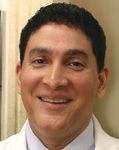- Case-Based Roundtable
- General Dermatology
- Eczema
- Chronic Hand Eczema
- Alopecia
- Aesthetics
- Vitiligo
- COVID-19
- Actinic Keratosis
- Precision Medicine and Biologics
- Rare Disease
- Wound Care
- Rosacea
- Psoriasis
- Psoriatic Arthritis
- Atopic Dermatitis
- Melasma
- NP and PA
- Skin Cancer
- Hidradenitis Suppurativa
- Drug Watch
- Pigmentary Disorders
- Acne
- Pediatric Dermatology
- Practice Management
- Prurigo Nodularis
- Buy-and-Bill
Article
New regenerative cell therapy effective in aesthetic indications
Fibrocell therapy is an innovative autologous cell therapy that is showing promise in the treatment of fine lines and wrinkles typically seen in photodamaged and photoaged skin. It also holds promise for treating depressed scar tissue, as it can revolumize the target area.

Key Points

According to experts, the autologous cellular therapy is designed to offer a personalized treatment platform for cosmetic patients in the form of a natural, living cell therapy.
"Autologous cell therapy is incredibly safe and has an extremely low adverse reaction profile," says Girish Munavalli, M.D., M.H.S., F.A.A.D., assistant professor of dermatology, Johns Hopkins University School of Medicine, Baltimore, and medical director of Dermatology, Laser & Vein Specialists of the Carolinas. "We are basically re-injecting a fibroblast skin factory in the dermis to start generating collagen. That is what makes this treatment so intriguing."
In the Fibrocell process, the physician takes a retro-auricular punch biopsy from which the patient's own collagen-producing cells (or fibroblasts) are then multiplied in culture to produce tens of millions of viable new cells, which are subsequently returned via injection to the target skin in the patient. For wrinkles, the cosmetic therapy consists of three sets of injections - a total of 6 ccs of cellular material - administered approximately five weeks apart.
"Azficel-T therapy replenishes fibroblasts that potentially stimulate the production of collagen and elastic fibers. Our clinical studies in wrinkles and acne scars showed that azficel-T serves to fill and smooth wrinkles and the depressed areas of skin typically seen in scar tissue," says David Pernock, chairman and chief executive officer at Fibrocell Science. "We believe this autologous cell process could have broad applications in a number of medical and aesthetic uses."
Azficel-T study
In a phase ⅔, multicenter, placebo-controlled, randomized clinical trial, the efficacy and safety of Fibrocell therapy was evaluated for the treatment of moderate-to-severe acne scars in 109 patients. Each patient received a total of three treatments on one side of the face and placebo on the other, and was evaluated four months after the last treatment.
Results showed that 43 percent and 18 percent of patients reported a positive cosmetic response on the Fibrocell therapy-treated side of the face and placebo-treated side of the face, respectively. Similar results were seen in the evaluators' assessments, where 59 percent and 42 percent of patients responded to the Fibrocell therapy treatment and placebo treatment, respectively. No serious adverse events related to Fibrocell therapy were reported during the course of the study.
"There is a great need for an effective treatment of acne scars, and we believe that Fibrocell therapy has a significant role to play in this largely untapped market," says Declan Daly, Fibrocell's chief operating officer and chief financial officer.
Different from fillers
"Autologous cell therapy is fundamentally different than fillers," Dr. Munavalli says. "The aim of the therapy is not volumetric expansion or correction of the dermis as with fillers, but, instead, it is more targeted toward fine lines and other contour irregularities such as acne scarring, as well as the defined creases and fine lines around the periorbital and perioral areas, both of which have lines which are almost too fine for conventional fillers."
Unlike fillers, azficel-T therapy replenishes fibroblasts with a person's own cells naturally. Fibroblasts are known to produce collagen and elastin, which contribute to the thickness, elasticity and strength of the dermis. Interestingly, the skin texture and quality over the treated areas can change, which, according to Dr. Munavalli, is something you won't see with fillers.
"We have an innovative technology platform that uniquely harvests and grows fibroblasts. We are offering personalized therapy, which is very unique," Mr. Pernock says.
Two phase 3 clinical trials evaluated azficel-T in more than 400 patients for the treatment of moderate-to-severe nasolabial fold wrinkles. The positive study reached statistical significance and demonstrated efficacy and safety, and a biologics license application (BLA) for azficel-T is currently under review by the Food and Drug Administration.
According to Dr. Munavalli, when it comes to the treatment of nasolabial folds, if the wrinkles are too deep, fillers may be the better choice for the time being. This is because the technology still has to prove effective for deeper lines and wrinkles, he says.
"For deeper nasolabial folds, I probably would not use this therapy in the first line just yet," Dr. Munavalli says. "However, we are still learning about this technology, and following each injection, the fibroblasts will continue to develop and produce collagen and elastic fibers, so theoretically, there is no ceiling here as to the potential of the therapy."
Other indications
In addition to wrinkles and acne scars, there are potentially other indications for Fibrocell therapy in the area of full-face rejuvenation, periodontal disease and burn scars.
Other less-invasive skin-rejuvenation procedures in aesthetic medicine include treatments with gentle lasers, radiofrequency devices, fillers and toxins.
"Although Fibrocell's clinical studies are currently focused on nasolabial folds and scar tissue, there are other visible or exposed skin areas such as the décolletage and hands that often need to be cosmetically addressed, as well," Mr. Daly says. "Fibrocell therapy could potentially be used in these target areas so all the visible skin has an even, youthful appearance.
"We are very happy with the efficacy we have seen in our studies to date, and we are excited to get moving on to other cosmetic and medical indications with this unique autologous cell therapy," he adds.
Disclosures: Dr. Munavalli is an investigator with Fibrocell on clinical trials.





